After releasing five critically acclaimed installments of the Hip-Hop documentary series Graffiti Verite’, award winning filmmaker Bob Bryan is already hard at work putting the finishing touches on five new films that will further explore and interpret the often misrepresented realities of Hip-Hop culture. While earlier volumes of Graffiti Verite’ were almost exclusively dedicated to graffiti art and the aerosol lifestyle, Bryan’s most recent film Graffiti Verite’ 5: The Sacred Elements of Hip-Hop takes us inside a Hip-Hop workshop put on by students and faculty at Metro High School in Cedar Rapids, Iowa. Offering a unique perspective into the educational value of Hip-Hop, GV 5 brings us face to face with an unlikely slice of middle America while reaffirming some of Hip-Hop’s core values in what many would characterize as an improbable setting. As Bryan aims to broaden the scope of Graffiti Verite’, the forthcoming releases in the series will explore elements of Hip-Hop literary poetry, spoken word, MCing, DJing, break dancing and beat boxing. Recently we had a chance to talk to Bob about filmmaking and Hip-Hop, among other things.
RIOTSOUND.COM: How did the whole concept of Graffiti Verite’ 5 come about, what were the circumstances of Metro High School putting together a Hip-Hop workshop based on the Graffiti Verite’ series of films?
BOB BRYAN: How GV 5 came about is I was contacted by one of the teachers at Metro High School. He was an art teacher there and he told me through an email that he wanted to say how excited he was about Graffiti Verite’ and that they were going to do a Hip-Hop workshop based on Graffiti Verite’ [at the high school]. When he contacted me and let me know I was thrilled and honored that they would do something based upon my documentary. I was just in the midst of doing GV 5, just beginning actually, and the idea of it was going to be that I would explore all the elements of Hip-Hop in an educational setting.
Because I had planned to do this already and then the e-mail came almost simultaneously, I thought it was kind of like the voice of god [laughs]. The only thing that I had to wrap my head around was that [the Hip-Hop workshop] would be in Iowa as opposed to New York, Los Angeles, Miami, Detroit or one of the other metro cities. It was in middle America and I didn’t know the degree of authenticity of the Hip-Hop in Iowa. But I thought, hey, if it existed in middle America then it exist every place. So I just invited myself down to capture it and that’s how it all came about.
RIOTSOUND.COM: Being that the workshop took place in middle America and you weren’t sure at first how authentic it would be; what were some of the things that may have surprised or impressed you once you got on location and started filming?
BOB BRYAN: I was very very impressed with Jim Jacobmeyer, the art instructor who came up with the concept. He’s an older Caucasian gentleman who is about forty years old and he grew up in Iowa. He had a real passion for Hip-Hop, he understood that it was an obvious way of being able to reach and communicate with students. He saw it as a bridge between educators and students and he wanted to go where the kids were. He didn’t want to have an art program in the school where adults were constantly talking down to the students. He realized that this was a way where you could talk about art, poetry, painting and music. You could talk about all kinds of mediums that are all wrapped into Hip-Hop. So I was surprised that he “got” that.
My theory all along [has been] that Hip-Hop is a multi-intelligence template. It is one of the only art movements that deals with all kinds of intelligences. Whether it’s bodily kinesthetic or audio or reading or textural or dance or music or painting, it involves all of that. So it’s a way of being able to communicate with people. If you don’t get them through the art, you can get them through the music. If you don’t get them through the music, you get them through the poetry. If you don’t get them through the poetry you’ll get them through something else. The four elements of Hip-Hop have that potential and [Jim Jacobmeyer] got it.
When I arrived there I saw that the kids were really passionate about the concept because some of them were already into Hip-Hop; but others who were not into Hip-Hop were surprised at the communication aspect of it and the ability of it to allow you to create a communication bridge for yourself and tell the truth about your own existence. Some of the students had been preoccupied with stereotypes, thinking it was all about this or that. But once they got into the workshop they realized that it’s all about YOU and your environment. You can always wrap your head around the reality around you and express it through Hip-Hop.
RIOTSOUND.COM: You initially started working on the Graffiti Verite’ series many years ago; what was the original inspiration behind the films and how has your own personal perspective of Hip-Hop culture been altered over the time you’ve spent working on the GV documentary series?
BOB BRYAN: With the first one Graffiti Verite’, I was trying to conceptualize what the name would be. The name didn’t come first, it came later. Verite’ means “truth” in French. I wanted to tell the truth about graffiti. And the truth I felt was not going to happen coming out of the mouths of other people; be they parents, be they administrators, be they police, be they anybody that’s not into Hip-Hop. The only truth was going to come from the practitioners. So I sculpted the first Graffiti Verite’ film around the idea of giving these artists an unfiltered voice. It was going to be a voice that didn’t have to be in contrast with anybody else’s opinion, but they were going to have opportunity to express themselves fully and I wanted to make sure we broke through the stereotypes.
The film [featured] 25 different artists from all kinds of socioeconomic backgrounds. They lived in Beverly Hills, they lived in Watts, they lived in Compton, they lived in East L.A., they lived in Hollywood. They lived all over and some were rich and some were poor. Some were educated where they went to college, some were businessmen, some were just practicing artists and some just wanted to get up. But they were all artists, there wasn’t any gangbangers. There were crews but they were crews of artists. So what I found out is that the stereotype about graffiti and graffiti art is vastly overrated and it’s created to create some kind of heat in the media.
In reality when they talk about “that gang of guys”; in reality it’s a crew of guys and/or gals whose entire intent is to put up a painting. They are art crews; they are groups of people who want to put up something beautiful and they want to share that beauty with their environment, their people and their community as well as strangers. In fact, it’s a dialogue. You can look at graffiti on the wall as the daily newspaper. So if you want to know what’s going on in the community you can simply read the writing on the wall. Of course, you have to know the language and how to decipher it and so forth and so on.
I was surprised at how articulate these writers were and I was surprised at the depth of not only their intelligence, but the depth of their aesthetics and their art history and their intent. They were concerned about community, religion and sociology as well as their own issues in their own families. Their need was that they had to communicate and they used this artform as a way of making a bridge. They want people to know where they’re coming from.
The thing that impressed me in terms of the process is that how many people outside of Hip-Hop are absolutely shocked that these are intelligent people. The stereotype is so hard in the media that you’d think they’re all gangbangers, you’d think that they’re all ignorant vandals and so on. And the reality is that’s not the way it is. Graffiti Verite’ has been blessed in that it has been given a ton of awards and it has access to all schools and libraries worldwide and they are now teaching courses where they are integrating the documentary and using it as a way of not only teaching up and coming artists but also kids who came up listening to the stereotypes that are preached to them in the media and they think it’s all about being hard and getting up and destroying and vandalizing and coping an attitude that you’re supposed to reflect. The reality is that [graffiti artists] are sensitive people who are not stereotypes but just people who come from all kinds of ways of life, who are torn by their experiences. I just wanted people to be able to see that.
So the kids get uplifted because they begin to see – oh my god, so how I feel is how it is; I don’t have to become “that” in order to be acceptable. And of course parents and administrators and schools and politicians and police and everybody else, their eyes are opened like – oh wow, we have to take a completely different approach to this. And, of course, the community of corporate America looks at it and says – wow, we had no idea; lets use this method of communicating artistically as a way to sell things. They’re now hiring graffiti artists to art direct their product displays and things like that. I’ve been brought to tears that people have been able to pick up on what the reality of these kids’ lives is.
RIOTSOUND.COM: You’ve created a Hip-Hop curriculum handbook for teachers that are interested in integrating Hip-Hop into their classrooms; what can educators expect to find inside this handbook?
BOB BRYAN: How you gonna teach Hip-Hop if you don’t know about Hip-Hop? [laughs] So the curriculum guide is really, subversively, an opportunity and a manual to teach teachers about Hip-Hop. What I do is I go through everything from vocabulary to the history of all the elements, where it came from, how it was developed, who are the players, what are the aesthetics and also some of the poetry. I put in examples of rap lyrics where they can freeze frame and really look at these words and say – wow, that’s poetic. So the curriculum guide was an opportunity to give educators an entrée to the Hip-Hop movement and an entrée to the art so that they could actually take the time to really know something about its history.
One of the things I say in the handbook is – once you try to teach this, understand that the teaching may come from the audience to you; the kids may be the ones that are able to tell you what it’s about. It’s just an opportunity for the kids to have a step up and begin to authenticate their reality. I use the handbook to give the teachers a chance to get some exposure so that the dialogue can begin. It’s because of what the teachers don’t know that creates the tension. They are the ones who haven’t been schooled. Once they actually do their homework they’ll find out that there really is an entire history about this movement and that it’s really all about them. It’s all about us. It’s not about “all those kids over there”. It’s all about us, it’s autobiographical, this is about our culture; this is about the 20th and 21st century. Learn what’s going on with the kids. Maybe you had R&B or maybe you had rock and roll or country; whatever you had [is fine] but now there’s Hip-Hip and kids get it and maybe you don’t. And maybe you need to listen now. So [the handbook] is just a bridge, it’s really just to program the educators as to what is going on with the kids.
RIOTSOUND.COM: How do you view the impact of corporate marketing over the past decade or so; do you feel that corporations have significantly infringed on the integrity of what we see when we turn on our televisions or what we hear on the radio?
BOB BRYAN: I came from a corporate mentality so I get it as well. In order for a corporation to step to something they have to make money. What their motivations are is very clear. They want to make some bread. They’re not about social change or anything like that. They’re all about, how can we take advantage of what exists to sell our products. It’s about control. So the minute corporate America begins to integrate Hip-Hop into their way of expressing their products, they want to control it. So what results is corporate Hip-Hop, like the stuff you now hear on the radio or television.
As far as the stereotypes about the music videos or what the elements of those music videos are going to be; bling bling, big butts, cash, money, misogyny, all kinds of dark ghetto behavior, gangbanging, violence, the juxtaposition of images as far as the way you dress or the way you treat women or how you relate to each other, those stereotypes are largely presented by corporate America as “what Hip-Hop is all about”. It’s negativised a lot of times. They put up their heroes, the people they own the contracts to, and say – these are the guys that you must emulate. And it all gets programmed and meta-programmed in the human bio-computer. Which simply means that what is put out there people will mostly accept and later regurgitate.
So you see a lot of mirroring going on in that people begin to act out the images that they see on TV which are created by corporate America in order to control the concept and the idea and the philosophy. You see a lot of empty, vacuous kinds of things in the media as far as Hip-Hop because they have looked at the stuff that they put out, they bought it and they think that’s what it’s all about. And conscious Hip-Hop, the people who are doing things or saying things that are not necessarily “cool” or not necessarily “sexy”, these people are not getting the contracts. So their message doesn’t get out, they can’t get radio play, it’s underground. So I understand that corporate America has by in large controlled the concept of Hip-Hop in terms of the overplay. But the underground of it is still pure; it’s just that the economics of it may not be there.
RIOTSOUND.COM: You have five more volumes of the Graffiti Verite’ series that will be coming out; at what stage are you currently as far as these forthcoming releases?
BOB BRYAN: Right now I’m a little crazy. Well, I’ve always been crazy but I’m really crazy right now because this past summer I challenged myself to do five different documentaries simultaneously. Any filmmaker will tell you that you would have to be out of your freakin’ mind to do that. But so what? Welcome to my world [laughs]. I’ve been in production since May of 2005 on the next five documentaries. GV 6 will be exploring literary written poetry. GV 7 is going to be about the spoken word reality; how that’s evolved and how it’s expressed. GV 8 is going to be about the art of Hip-Hop break dancing; it’s all about the evolution and the history and the reality of why [break dancers] do what they do and how they do it. GV 9 is going to be about the MC and beat boxing. And then GV 10 is all about the DJ and turntablism. I worked from May until about September on the intellectual aspect of it. What I mean by intellectual is all the interviews and all that kind of stuff. Now I am in post production on all five documentaries. We have a release schedule proposed for March, April, May, June and July for the five releases.
RIOTSOUND.COM: With the advent of technology it seems that film is becoming a means of expression for more and more people; recently someone made a short film using simple software about the riots in France which resonated on an international level. How do you see film as a medium of expression evolving over the next 10 years?
BOB BRYAN: As long as humanity is involved in it, it’s always going to be good and bad. It’s the yin and the yang and it’s always going to be that. The point of how you look at it determines what it is. Francis Ford Coppola said years ago just as he was on the verge of introducing video into filmmaking, he said “in the future, everybody will be a filmmaker”. What he meant by that is that everybody is going to have a camcorder and that everybody is going to have access to cheap tools such as software where you’re going to be able to shoot, edit and present your own films.
The reality is that everyone who’s got a camera is a filmmaker. So there’s going to be a lot of stories that are explored. Years ago I had to use a $75,000 camera and not everybody can [afford] that. I had an editing system that cost $120,000. Now for a couple of hundred bucks you can have an editing system and for another couple of hundred you could have a camera. So everybody is going to have an opportunity to express themselves. And because of the smallness of the cameras and the technology you’re going to be able to get the camera into situations that you couldn’t before. So we’re going to be as we are now. We’re inundated with ideas, with messages and with films. Some of us have what’s called audio-processing disorder, which mean if we listen too long it all goes in one ear and out the other.
I believe dyslexics may take the world over in the future because you have a tendency to be visually gifted. For instance, minority peoples also have a tendency to be visually gifted and not so much linguistically oriented, although we obviously have spectacular examples of those who do that as well. A lot of us have been dissed in school because we don’t learn in a particular learning style. Now with the visual components coming up as well as filmmaking, I believe more and more people are going to have a voice and there’s going to be a visual dialogue going on. Some of the stuff is going to be crappy because there are crappy filmmakers and some of it is going to be excellent because there are also excellent filmmakers. The cream is going to rise to the top.
So I think what we’re going to see, like you saw in that particular snapshot of the riots in France, is that there are going to be more and more situations that are covered where mass media or the majority of media won’t present it because they have a vested interest in controlling the image. I think you’re going to see people on the inside of movements and close to the action documenting and putting things out there. And we are going to see a part of reality and a part of life that we’ve never seen before. So I’m only enthusiastic about it. But you have to also understand that those who want to deliberately manipulate a message in order to program people are also going to have control of this media technology. So we’re going to have to filter through what’s propaganda and what’s real, what’s acceptable and what’s not.
Everyone will have the opportunity to put out their message on the internet so I think everybody is fair game. Just like you decide what kind of magazine you pick up at the newsstand or what kind of television shows you want to watch, you will now have that much more information that you must filter through and program yourself by. Ultimately that’s what it’s all about, people will be programming themselves. Now the interesting psychological factor about that is that it doesn’t necessarily happen from outside but through your own desire and passion you end up choosing or affirming your own reality. So people are going to program themselves by the things they believe in.
Those people who want to stretch beyond their current state of knowledge will also have the opportunity to pick up a different book or a different film to get that added information. The ignorant people will choose ignorance. The enlightened or intellectual or those curious about what they don’t know will choose more information. So I just look at it as an advanced encyclopedia or an advanced library, both visually and otherwise, that will bring information to us that we never knew before. Just like the explosion of the internet.
For more info on director Bob Bryan and Graffiti Verite’ please visit www.GraffitiVerite.com.






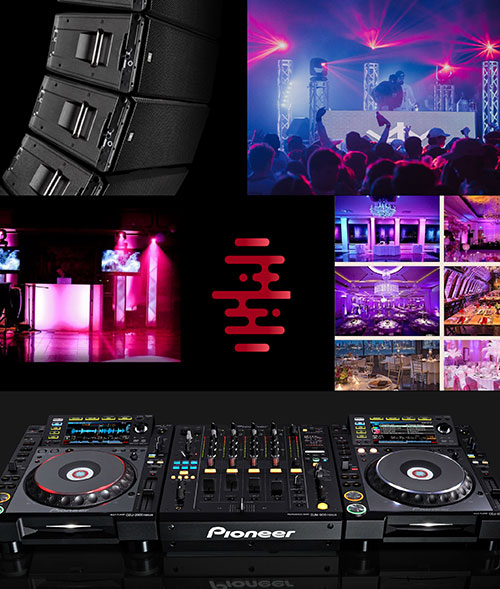


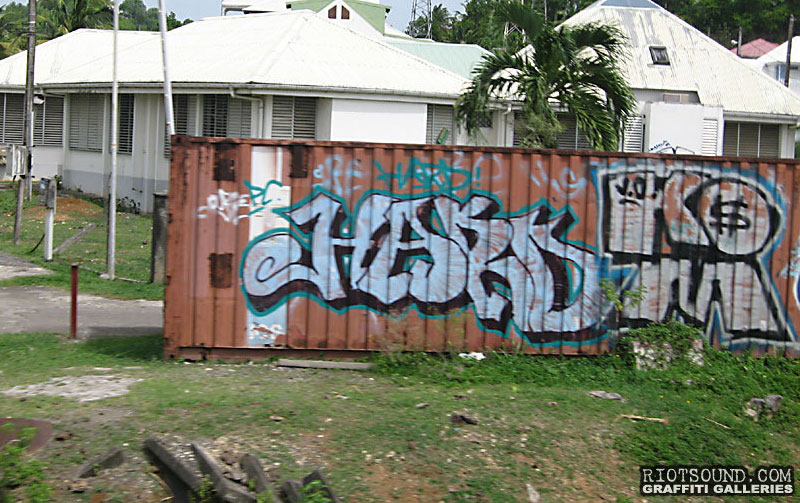

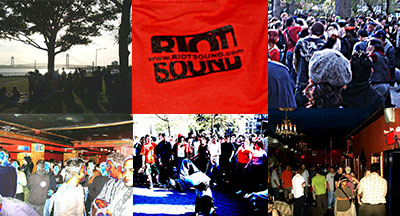
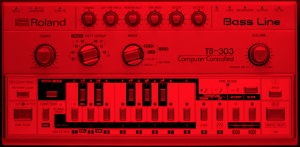














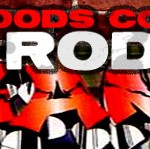

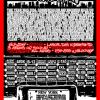

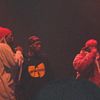

Comments